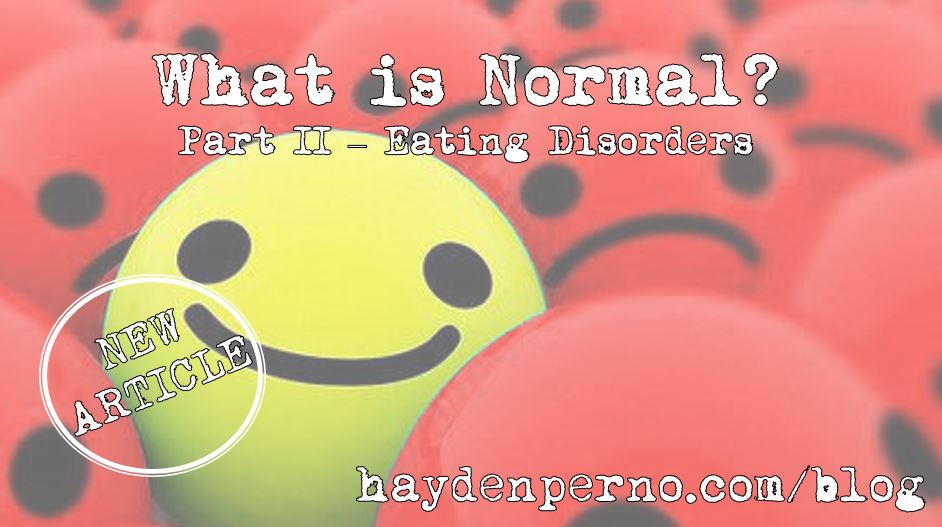The following is a handful of edited excerpts from an essay that I wrote this year for a philosophy subject. Due to the nature of philosophy, the questions/topics given to us were open-ended. We were quite free when deciding upon which one to choose, along with being able to shape it into how we would prefer the question to be. I ended up with the question: ‘What is the relationship between mental and bodily health?’. You can read Part I here.
To exhibit behaviours such as touching a wall a number of times, repeatedly switching a light on and off, or even needing to check on the status of a fridge door constantly, can warrant the use of the dreaded obsessive compulsive disorder (OCD) label. Yet, if we are to consider these type of behaviours to merely be a reflection of standard addictions or impulsive behaviours, then what can be said of hoarders, gym “junkies”, healthy eaters, binge eaters, unhealthy eaters, binge drinkers, “workaholics”, and so-called “emotional” shoppers? Similar repetitious behaviours exist here, too, but regardless of them certainly being ‘obsessive’ and ‘compulsive’, society and the media are not always so quick to judge, label and condemn the individual’s that engage in these behaviours. What is going on here?
Let us consider a scenario between a healthy and unhealthy eater. In one case, consistently (or persistently) eating healthy can very well be seen as ‘abnormal’ to a lot of people. Yet, the exact opposite can be said from the other point of view. Eating unhealthy, can also be seen as ‘abnormal’ to a certain circle of individuals. And again, the exact opposite from the alternate perspective. The difference here, however, seems to come from the influence of one’s own built environment; where they grew up, who they hung out with, what people influenced them. What is going on here?
If we look towards Western society and its mass media portrayal and expectations of men and women, we can clearly see that there seems to be some sort of overruling idealisms for what is viewed as “perfect”. Idealisms such as these can indeed be problematic when it comes to synthesising what is known as ‘emotional dysregulation’. An ‘emotional dysregulation’ can, unfortunately, worsen and even lead to one falling into an eating disorder (ED) pattern. The like of which that is interestingly seen at a higher prevalence within Western countries as opposed to non-Western countries (Makino et al., 2004).
However, the mass media and society’s influence is only one factor in the ED story. The biological makeup of the individual can further the onset of a condition such as this. For instance, as certain individual’s behold various tendencies for the development of addictions and obsessions, as determined by one’s evolutionary history and current genetic makeup, it is thus possible to attach the onset and development for ED to the individual’s environment wholeheartedly.
But to make things more complicated, if we are to look towards Boorse’s account of health (learn more about that in Part I), statistically, ED patients care of course categorised as ‘abnormal’. When we discuss the biologically functioning (i.e. surviving and reproducing) component of this account, however, things tend to get even more complex.
For starters, in regards to reproduction, despite menstrual irregularities that may occur when dipping below the statistical average for body mass index, “fertility problems are not more common in these women”. Instead, the issue here is that weight gain can occur alongside pregnancy and can thus lead to an individual’s ED worsening. Despite this, however, and in direct contrast, EDs can indeed be seen to entirely diminish during pregnancy if the mother’s concern for the health of the baby overrides their own (Ward, 2008).
If such power exists, as displayed in an individual’s ability to break free from EDs behaviour tendencies due to the worry for their own child’s health and a realisation for their own, can we blame biology solely? It seems as much that the environment must play a larger role in determining one’s slide towards the development of a condition such as an eating disorder than that of genetics (Berrettini, 2004).
Although, at the end of the day, the darker side of the story points towards the reality that surrounds the existence of ED in the first place. If we are to dig deeper down the rabbit hole, we can be met with the story of an ED merely being a cover story. Or, a mask that is the superficial display of something much, much darker that is affecting an individual.
This story can get even deeper when we turn towards the topics of determinism and inescapable biological errors when it comes to the normality story. But, let’s save that for another time.
References:
Berrettini, W. (2004). The Genetics of Eating Disorders. Psychiatry (Edgmont). 1(3), 18-24.
Makino, M., Tsuboi, K., Dennerstein, L. (2004). Prevalence of Eating Disorders: A Comparison of Western and Non-Western Countries. MedGenMed online.
Ward, V. (2008). Eating disorders in pregnancy. BMJ, 336(7635), pp.93-96.


